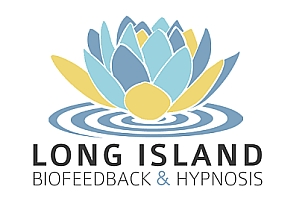
Biofeedback
What is Biofeedback?
Biofeedback is the noninvasive use of instrumentation to view the psychophysiological processes to which you are not normally aware and learn to bring them into voluntary control. What this means, is that the individual can learn to affect changes in their bodies that are directly related to levels of stress, anxiety, pain and concentration. This information can from many physiological systems including muscle tension (electromyogram), perspiration levels(electrodermal response), skin temperature, heart rate, blood pressure, brain wave activity (electroencepholgraphic feedback) and more.
What can I gain from Biofeedback?
The biofeedback instruments are but a guide for the patients. The focus of the training is on the self-relaxation techniques that the patient learns. As the patient learns these powerful yet easy to learn techniques, they are able to see the immediate affect they have on their stress levels. The goal is to learn to recognize the body’s early signs of stress and reduce them. The patient learns to restore control over stress, anxiety and tension and to activate body’s healing mechanisms.
How is Biofeedback training done?
Biofeedback protocols vary in the the types of instrumentation used, the number of sessions required and the kind of follow-up needed to maintain established benefits. Each training session usually lasts less than an hour. It is done in an office setting on an individual basis. Depending on the condition. it requires about 10 sessions, usually once a week, and less frequently as training progresses. Audio CDs can be recorded, so patients can practice at home. Neurofeedback training for ADD usually entails 20 to 40 twice-weeklv 45 minute sessions during which the patient, wired to in EEG machine, plays a video game that he or she must control by modulating brain waves.
Physiological Applications. CLINICAL APPLICATIONS OF BIOFEEDBACK:
- Cardiovascular disorders- (Hypertension, cardiac arrhythmia’s,tachycardia).
- Migraine, cluster and tension headaches.
- Gastrointestinal-(IBS, reflux disease, ulcerative colitis).
- Peripheral vascular disorders-(Raynaud”s disease).
- Respiratory disorders-(asthma, COPD).
- Neuromuscular disorders.
- Neck and low-back pain.
- Tics, bruxism and TMJ.
- Incontinence.
Chronic conditions and immune system disorders
- Autoimmune disorders-(rheumatoid arthritis, MS, SLE).
- Specialized pain conditions-(fibromyalgia, RSD, etc.).
- Cancer
Mental Health Conditions
- ADD/ADHD
- Anxiety Disorders and phobias
- Behavioral and adjustment disorders
- Obsessive-compulsive disorders
- Anger management
- General stress management
CORONARY DISEASE
In a four year follow-up study of 192 men and woman aged 35 – 64 who were identified as having two or more risk factors (including: blood pressure > 140/90 mm. Hg. plasma cholesterol concentration > 6.3 mmol/1 243.6 mg/100ml, and a current smoking habit of > 10 cigarettes a day), significant observations were noted with a treatment group that received relaxation training (such as those commonly employed with biofeedback) when compared to a control group.
The group receiving relaxation training showed clear reductions of both systolic and diastolic blood pressure and these differences appeared to be maintained after four years. Plasma cholesterol concentrations and the number of cigarettes smoked were lower in the treatment group at eight months but not at the four year follow-up. In addition, at four years, more subjects in the control group reported having angina, hypertension ischemic heart disease and had fatal myocardial infractions than the treatment group. (8)
HEADACHES
Many clinical trials show the benefits of biofeedback training with both tension and migraine headaches. A 1990 meta-analysis of clinical trial data from over 2,000 patients with migraine headaches found that overall,
biofeedback was equally efficacious to Pronolol in reducing the frequency of migraines. (1)
IRRITABLE BOWEL SYNDROME
In a study of 16 patients diagnosed with Irritable Bowel Syndrome (5.), a significant reduction in IBS symptoms A-as shown. When a treatment group of 8 patients (who received instruction and home practice of progressive relaxation training) was compared to control group of 8 patients who were merely monitored on GI symptoms, the results showed that there was a significant improvement in symptom reduction (50% improvement p = .05) in those patients having been instructed in relaxation training.
RAYNAUD’S DISEASE
For primary Raynaud’s disease, controlled investigations reports 66 to 92 percent reduction in symptoms frequency (10).
INCONTINENCE
A recent study reported that post prostatectomy patients who received biofeedback with pelvic muscle training achieved continence sooner than those in a control group (2). In another study of 135 older woman suffering with urinary incontinence, a significant difference in control of urinary loss was seen between woman who were instructed with pelvic floor exercises and those who combined these exercises with biofeedback. (3).
ADD/ADHD
In recent times, the problems of attention deficit disorders have become more widely recognized. These problems not only affect impairment in concentration, but also affect behavior (impulsively), and self-esteem. If left untreated, these problems follow into adulthood. Until recently, the treatment has been by the use of powerful stimulant medications such as Ritalin. Although these medications can be very effective, there are problems associated with them. These drugs are short acting, wear off quickly and have no curative effects. They also can cause insomnia, loss of appetite, and agitation..
A new, exciting and effective alternative treatment for ADD/ADHD has been discovered in the past 15 years with the use of electroencepholographic biofeedback. Studies have shown that there are specific brain waves that are associated with various mental states. In the daydreaming state, slow moving brain waves known as Theta waves dominate. In the more focused or alert state these Theta levels drop, while faster moving Beta waves increase. EEG biofeedback trains the child (or adult), to learn to concentrate better by learning to control these brain wave activities . In doing so, impulsive behaviors decrease and school performance and self-esteem increase. The treatment is completely noninvasive and with computer driven games is fun and stimulating for children.
PHOBIC DISORDERS AND ANXIETY
In a number of case studies conducted in Israel of patients suffering from various types of phobic disorders (including Agoraphobia), biofeedback combined with hypnotherapy was shown to clearly decrease phobic reactions in In-Vitro Performance (7).
Referrences:
- Holrovd K. Penzien D, PhariiiacoloLical versus non-pharmacological prophylactics of recurrent migraine headaches, a meta analytic review of clinical trails Pain 1990 42 1-13
- Mathewson-Chapiiian N, Pelvic muscle exercise/biofeedback for urinary incontinence after prostatectomy:an education program. J Catic-er Edu(,atioti 1997; 12 (4) 218-223
- Burns P.Pranikoff K. Nochjski T, Hadley E. Levy K, Orv M Comparison of effectiveness of biofeedback and pelvic muscle exercise treatment of stress incontinence in older coniniunity-dwelling wofl)en, J GeroriioloiZN- 1993: 48 (4) 167-173.
- McGradv A. G@.@tenmaier L. Effect of biofeedback assisted relaxation training on blood glucose levels in a ty I insulin dependent diabetic, a case report, J Belitit@ Tlier & Exp. Pvi,(-hiat. 1990;21 (1) 69-75
- Blanchard E, Greene B, Scharff L. Schwartz-McMonis S. Relaxation Training as a treatment for irritable bowel syndrome. 1993 17 125-132
- Lubar J. Swartwood M, Swartwood J. O’Donnell P Evaluation of effectiveness of EEG neurot’eedback training for ADHD in clinical setting changes in T.O.V.A. scores, behavioral ratin-s, and WISC-R performance. Biofeedback and Self Reg. 1995@ 20: 83-89.
- Somer E, Biofeedback-Aided hypnotherapy for intractable phobia anxietv Amer J Cliti Hxpii 1995 @ 37 (3) 54-64
- Patel C, Maniiot M, Terrv f). Carruthers M. Hunt B, Patel M. Trial of relaxation in reducinng coronary risk: four vear follow up Britisling 1985@ 290 1103-1106
- Nicassio P. BoN,Ian M. McCabL T Progressive relaxation. EMG biofecdback and hioteedback placebo in the treatment of sleep-onse(Insomnia. Briii.@li J oj Aft,dif@(il P.@ 1992: 55, 159-166


